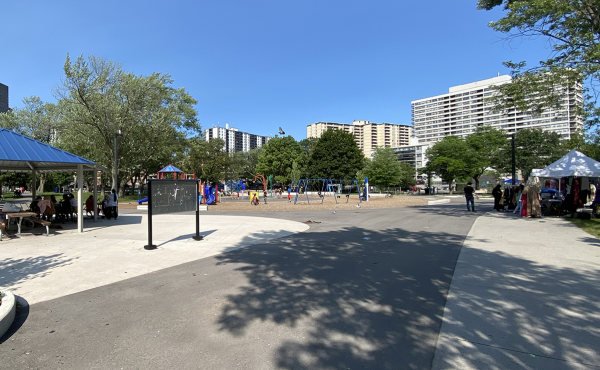
Cross-posted from Eye Daily.
Illegaldownspouts.ca — okay, so this website doesn’t really exist, but in a matter of three years it might. This morning the Public Works and Infrastructure Committee approved a staff report (PDF) that recommended it be mandatory for homeowners to disconnect their downspouts (those pipes that collect rainwater runoff from roofs) so that they can no longer funnel stormwater directly into the city’s sewers. Should council approve the idea, the new regulation would come into effect three years hence (that should give everyone enough time to comply).
Newbies to this issue might wonder: what’s the big deal with downspouts? As it turns out, though they may seem innocuous, connected downspouts can cause a world of harm to people’s homes and the environment. In the former City of Toronto, which also happens to be full of older homes, many downspouts spout into underground tunnels that combine sewage sludge and storm water. During heavy rainfalls (during which downspouts direct a lot of water underground), our wastewater system often lacks the capacity to handle the deluge of polluted water and excrement that flows through the pipes, and it gets spewed into the lake as a result. Encouraging people to disconnect their downspouts to allow the rainwater from their roofs to soak in to soft surfaces, such as a garden or a front lawn or, ideally, a rain barrel that can store the water for later use, has been a key part of cleaning up our lakes and beaches so that they’ll be safe for swimming, among other things.
Another threat resulting from yet-to-be-disconnected downspouts is the flooding of homes. During the big storm of 2005 that wiped out a good chunk of Finch Avenue (see photo above), for example, over 4000 homes in the area experienced extreme basement flooding. Think: raw sewage up to the ceilings in come cases. Councillor Michael Thompson describes the flooding in his ward as “chronic.â€
“Some residents in my ward are no longer covered by insurance because they’ve had so many problems before,†he told the committee. “They live in fear of the rain.â€
The weird thing is that when representatives of the city did a door to door campaign offering residents in neighbourhoods where flooding was particularly severe free downspout disconnection, only 60 percent of the people they spoke to took them up on the offer — even after the connection between the flooding and connected downspouts was explained. Another problem is that “extreme storm events,†as city staff and politicians call them, are happening more frequently.
With the mandatory requirements, however, the city’s free downspout disconnection program will come to an end. Homeowners have until November 20 to sign up for the complimentary service (though low-income households will be subsidized after that date). The city simply can’t afford to disconnect everyone’s downspouts free of charge — it’s estimated that 350,000 residential properties are directly connected to the city’s sewer systems.
Committee chair Glenn DeBaeremaeker argued that the making downspout disconnection mandatory will ulimately save residents money. “The more water we take out of the storm sewer, the better we can protect our infrastructure,†he said.
Shelley Carroll pointed to the benefits of using the soft ground as a natural filter. “The ground is not a piece of infrastructure that we have to replace in the budget,†she said. “We have to make nature a partner with the city.â€



